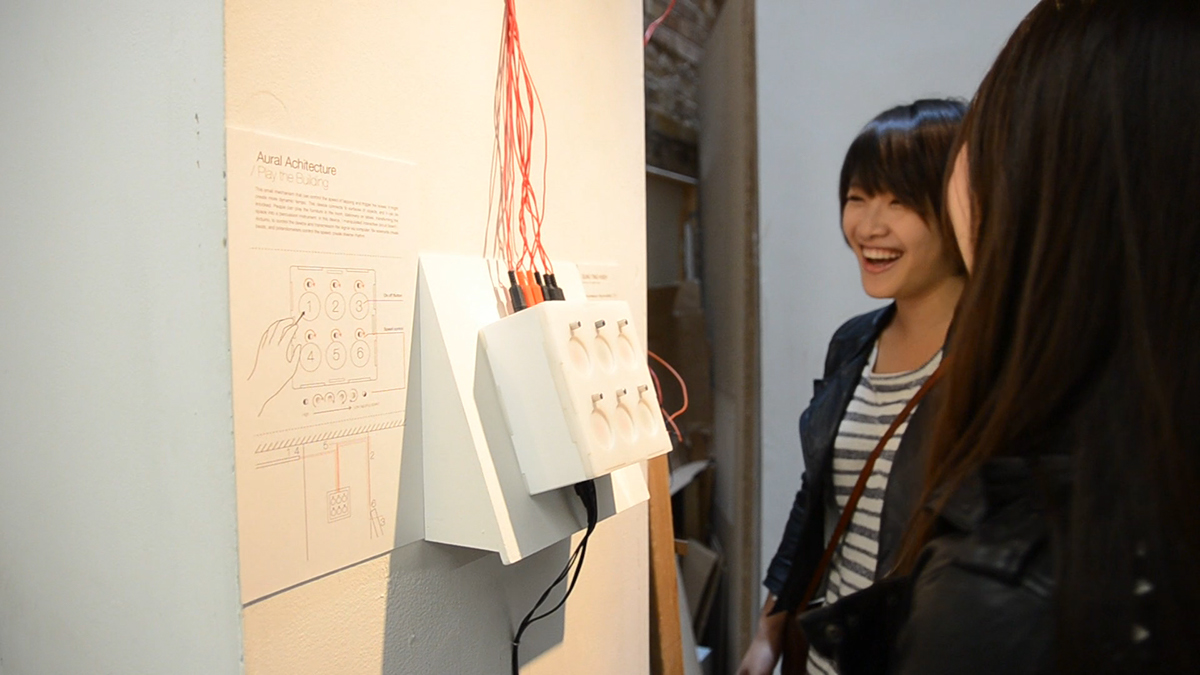Arual Architecture series | Play the Building
Year: 2013
Location:UK
Year: 2013
Location:UK
Medium of work: Arduino, Bread board, Push Button, Potentiometer, Adaptor, Voltage Regulator, Solenoid
“Wherever we are, what we hear is mostly noise. When we ignore it, it disturbs us.
When we listen to it, we find it fascinating (John Cage, 1937)
David Byrne, Francis Alys and Philip Glass used architectural structures or furniture as a musical instrument. Noises came from physical action, which triggered the vibration and resonance of materials. According to this idea, I created a series of aural art pieces to simulate the interaction between the action of people and space. Different materials and sounds reveal diverse sense: cold, warm, soft, and intimate. As with all sensory aspects of architecture, cultural values and social functions determine the experiential consequences of spatial attributes. John cage manipulated silence to arouse people with the ordinary sound or noise in our life; Philip Glass mentioned the unit of noise could be arranged as sound pieces or rhythms, combined in regular arithmetic progressions. Therefore, base on their theories, my project aims to discover the sound around us. Through the actions such as touch, knock, these slightly noises let people observe the hidden details in our routine life.
This small mechanism that can control the speed of tapping and trigger the noises. It might create more dynamic tempo. This device connects to surfaces of objects, and it can be knocked. People can play the furniture in the room, stationery on tables, transforming the space into a percussion instrument. In this device, I manipulated interactive circuit board – Arduino, to control the device and transmission the signal via computer. Six solenoids create beats, and potentiometers control the speed; create diverse rhythm.





